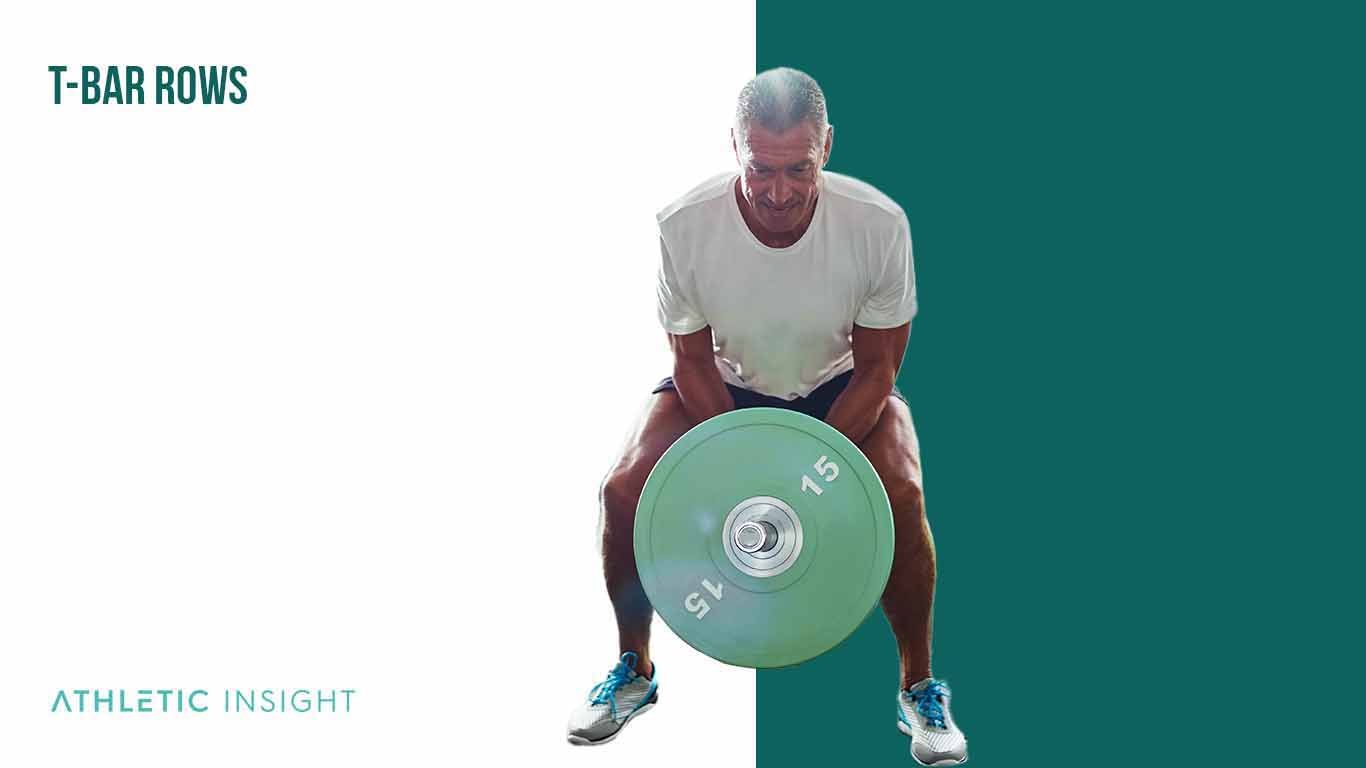Seated cable rows are one of the gold standard exercises for outstanding back. The seated cable row is an exercise that works out the back and furthers the development of the pulling motions of the anterior portion of your body. However, there are also situations where seated cable row alternatives are more ideal for your workouts.
The seated cable row alternative is an exercise that uses similar equipment, movement patterns, or muscles to get the same benefits as the seated cable row with a slightly different form or equipment used. The purpose of using a seated cable row alternative exercise is to work with existing injuries, accommodate specific needs, and fix any muscular imbalances.
Beginners may find that some of these alternatives are difficult to perform, which is why form should take priority over weight. For advanced weightlifters, such as Olympic athletes, Strongman competitors, Bodybuilders, or lifting enthusiasts, these alternatives are perfect for developing muscle and increasing strength.
While there are many alternatives, this article will stick with eight of the most well-known movements to perform if you are looking to switch it up.
- Pendlay Rows
- T-bar Rows
- Seal Rows
- Seated Band Rows
- Incline Bench Dumbbell Rows
- Single-Arm Dumbbell Rows
- Inverted TRX Rows
- Single-Arm T-bar Rows
1. Pendlay Rows
Pendlay rows are a seated cable rows alternative that focuses on the Trapezius, Latissimus dorsi, and Rhomboids. Instead of planting your butt on a bench, you’ll do a strict version of the barbell row, tilted forward at the hips.
This position and the fact that you set the bar down all the way to the floor in between each repetition force you to activate your core and lower body to a greater degree than a traditional seated row. Your glutes will have to stabilize the exercise, so you’ll work on your balance too.
This is an excellent substitute for seated cable row because it emphasizes the same muscles, like the Lattissimus Dorsi (Lats), rhomboids, and rear delts but doesn’t require anything more than a barbell. Because this exercise works the stabilizer muscles and the lower body quite hard as well, it’s an excellent cable seated row alternative for athletes.
Those who lift for raw power, like strongmen, might not get that much out of this move. However, if you are a bodybuilder, this movement is a great additional exercise. Overall, this alternative has average difficulty to perform.
2. T-bar Rows
The T-bar row requires a special piece of equipment called a T-bar. This is a cable row substitute or alternative that falls under the umbrella of chest-supported rows as your sternum rests on a pad.

The T-bar row is the most used seated row substitute for bodybuilders and weightlifters, but they lack the functional utility many athletes and competitive strongmen desire.
It is an outstanding way to work the lats, the rhomboids, and the biceps. Still, since you’re locked in position and browning the bar to your chest, your accessory and stabilizer muscles can take a little bit of a break.
Overall, the T-bar row is a beginner-friendly seated cable row alternative that takes some practice to get used to.
3. Seal Rows
A seal row is a dumbbell or barbell alternative to a chest-supported row. Instead of using a barbell or a T-bar at an angle, you’ll do this exercise face-down on a flat bench.
Seal rows force you to brace your body with your abs while squeezing your hamstrings and glutes. You must also retract your scapula. When you put it all together, you can work your lats and rhomboids in a full range of motion.
This position, especially when using dumbells, allows a slightly greater range of motion. This is due to the fact that the dumbbells can travel past your chest a bit, allowing a bodybuilder or weightlifter to isolate their rhomboids at the top of the movement.
This specialized range of motion might not appeal to an athlete or strongman looking to perform more functional activities as alternatives to cable rows. Alternating your grip can also shift the emphasis to accessory muscles, like your biceps.
4. Seated Band Rows
The seated band row alternative is an exercise that closely mimics a seated cable row. Since you don’t need anything besides an exercise band, seated band rows offer a seated cable row alternative at home, which is beneficial for those that are unable to make it to the gym.
While the seated band row is not a recommended lift for strongmen, athletes, bodybuilders, and weightlifters of all skill levels can take advantage of them to isolate their lats, traps, and rhomboids.
You can’t add weight to this exercise for explosiveness, but you can work hard to maximize the burn during the eccentric phase. However, there are bands with greater resistance that are recommended once you have proper form.
This is a popular and simple seated cable row alternative, especially for those who are working around injuries or correcting an imbalance.
5. Incline Bench Dumbbell Rows
The incline bench dumbbell row is an alternative to the seated cable row. By adjusting the angle of the bench, you can change the emphasis of the exercise, making it a great alternative with tons of variations.
A brief squeeze at the top of the motion, especially with your scapula pulled back and retracted, makes this a good alternative to cable rows, especially at home. All you need is dumbbells and a bench.
With an incline, the emphasis shifts off your mid-back and starts to work the trapezius muscles more effectively. When done with proper form, this is a great machine high row alternative, as it mimics the angle.
This is a simple and popular move with bodybuilders and weightlifters. Even strongmen and powerlifters use this exercise for helping to generate power throughout their back instead of isolating only the mid-back.
6. Single-Arm Dumbbell Rows
Single-arm dumbbell rows are a cable row alternative you can perform even at home. While the single-arm dumbbell row targets the back muscle, the core is also heavily activated due to the isolation of one side of your body.

Since you have to tilt forward at the hips, you’re forced to maintain a solid core, and your glutes will also stabilize you throughout the motion. It’s surprisingly demanding of the calves as well since you will feel a slight pull forward and need to counteract it, especially if using heavier weights.
This emphasis on stabilization makes single-arm dumbbell rows popular with athletes and bodybuilders who are looking to correct imbalances or a lack of symmetry in their development. Since you’re only working one side of the body at a time, there’s nowhere for any weak points to hide.
While the single-arm dumbbell row is most ideal for athletes, anyone that performs the movement will benefit. Overall, this is a moderately difficult exercise to perform. We recommend starting with less weight and focusing on form.
7. Inverted TRX Rows
The TRX, or total resistance exercises, is a seated cable row alternative that utilizes a suspension system to create an emphasis on core stability, flexibility, and balance. Of course, it’s also a means to develop strength.
The TRX inverted rows take the traditional rowing exercise and flip it over. So, instead of pulling a bar or dumbbell to your chest, you’re on your heels, pulling your chest toward the ceiling.
This is not the sort of exercise that appeals to a typical bodybuilder or strongman because it’s not conducive to adding big weights and growing muscle. But, for older lifters, those with injuries to work around, and those who need to correct imbalances, inverted TRX rows with a suspension system are an ideal machine row alternative.
If you want a substitute for a seated cable row but you don’t have a TRX suspension system, you can also perform inverted rows with a barbell. Just set the bar at an appropriate height on a power cage. You can even use a table if you don’t have a barbell, making it a great at-home exercise.
8. Single-Arm T-bar Rows
The single-arm T-bar row is a seated cable row alternative that focuses on the upper back, lower back, and core. Since this movement isolates one side of your body, the core gets more activation compared to the seated cable row.
Single-arm T-bar rows emphasize balance and stability. That is why this exercise appeals to all lifters, from weightlifters working around injuries to bodybuilders working on correcting an imbalance to powerlifters and strongmen trying to maximize the power they can generate with each side of their body.
Overall, this is a moderately difficult exercise to perform and requires a barbell and weight if you are strong enough. It is a great alternative if there are no benches available at the gym, which can sometimes happen.
What to Know About Seated Cable Row Alternatives?
Seated cable row alternatives all try to recreate an aspect of the traditional seated row. Each seated row substitute and cable rows alternative has its own emphasis. So, choosing the best seated cable row alternatives for you and your workouts might mean picking out a few exercises.

Which Seated Cable Row Alternative is Beginner-Friendly?
Inverted TRX rows are probably the most effective alternative for beginners. It forces any lifter to practice proper form, and you must use your stabilizer muscles to maintain your posture and form. You can also easily adjust the difficulty by leaning back more or less, so it’s an effective starting point for a beginner rower. Read Best Exercises for Beginners if you want to learn more basic exercises.
Which Seated Cable Row Alternative is Better for Shoulders?
Seated cable rows ask a lot from your shoulders. So, many weightlifters do variations on cable rows to attack not only the back from different angles but the deltoids as trapezius muscles as well. The incline dumbbell row is a good way to force your shoulders to work evenly, as each side of your body has to lift the weight independently. So, your shoulders have to pull their fair share of the weight.
An incline dumbbell row is on an adjustable bench offers another way to fine-tune this exercise, and it can also help you hit your shoulders harder. By angling the bench, you can emphasize the traps and delts, forcing them to do more of the lift than the bigger muscles of the back. Plus, if you have a nagging injury, you can also de-emphasize the shoulders by adjusting the bench, making it better for shoulders than any other seated cable row substitute.
Which Seated Cable Row Replacement Exercise is Better for Back?
Seal rows are also a solid choice for anyone with a barking lower back. They are easier on the lower back than other exercises because those muscles aren’t under as much tension as they would be doing other alternatives to cable rows. If done correctly, Seated Cable Row is an effective exercise to include in your back workout routine.
Which Seated Cable Row Substitute is Better for Strength?
To develop strength, the best seated cables row alternative is the T-bar row. Since your chest is supported, and many T-bars offer multiple grips for attacking the upper back’s muscles, lifters can push the weights up and get a great all-around back workout.
When Should an Athlete Use Seated Cable Row Alternative for Exercise?
Athletes should make use of a seated cable row substitute at any time in a few situations. If you have a stubborn injury, an imbalance, or a lack of symmetry in your development, there is likely an alternative to cable rows that can either help cure the issue or avoid making the pain worse.
Plus, there are also simple situations where an athlete doesn’t have access to a seated cable row machine. Since we can’t always do cable rows at home, or we might need a seated cable row substitute when a machine is occupied or broken at our gym, any exercise on this list is a viable cable row alternative.
Can Seated Cable Row Alternatives Replace the Seated Cable Row?
No exercise can replace the seated cable row. Its positioning is ideal for working your back, the machine is supportive and even corrective to a point, and the cable setup offers consistent resistance.
Other exercises offer opportunities to change the angle of the exercise, more or less support, and ways to ask more of the accessory muscles that help perform rows. However, none of them replace the traditional seated cable row.
Can Seated Cable Row Alternatives Help Shoulder Pain?
If you have serious shoulder pain, you should see a doctor before doing any back exercises. They all stress and strain shoulder muscles, so if you have an injury, there is a risk that a seated cable row alternative could do even more damage.
However, if it’s safe to work out, a seated row substitute can take some of the strain away from your shoulders. For instance, doing a single-arm T-bar row spotlights your back and biceps and offers enough chest support that your shoulders can take a little break from stabilizing the movement.
What Are the Seated Cable Row Variations?
Seated cable row variations are part of a well-rounded program for back development. Traditional cable rows are extremely popular and used by almost all athletes. Still, any machine row alternative offers a chance to vary the emphasis of the movement, helping you to develop your back and the accessory and stabilizer muscles that contribute to healthy overall development.



